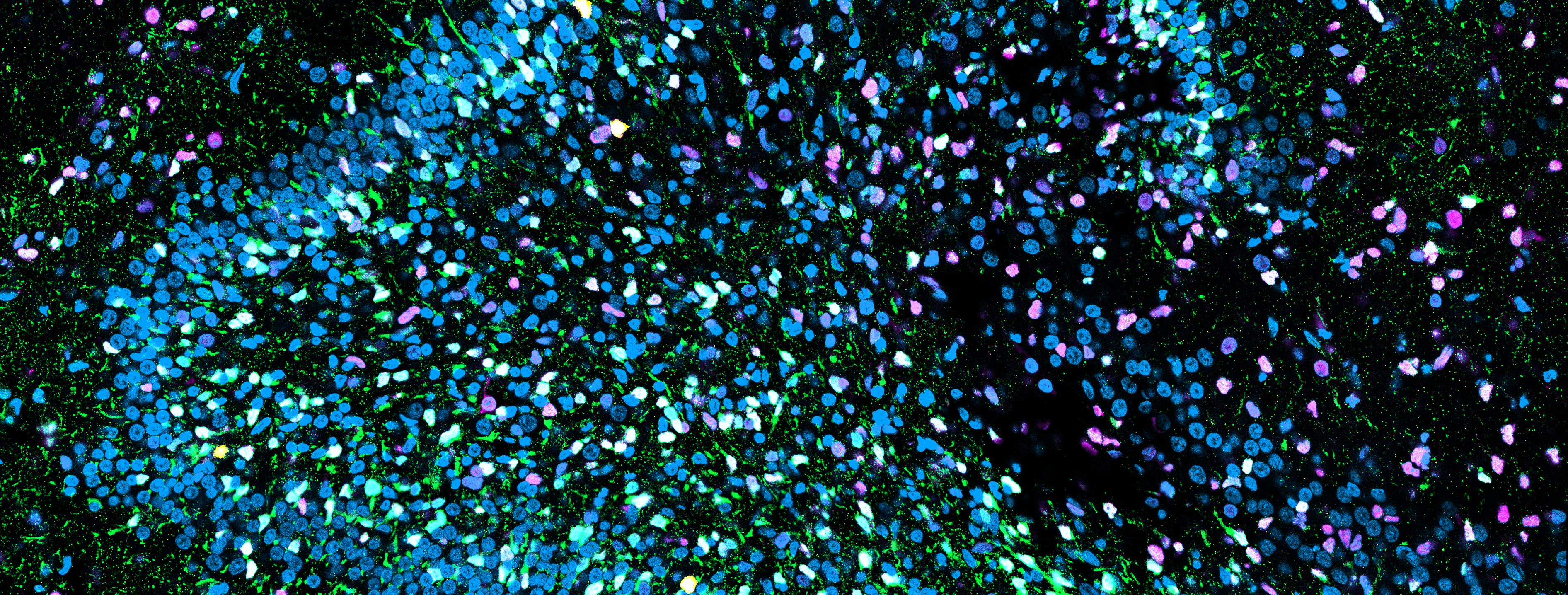Speaker
Description
Microglia are the principal resident immune cells of the central nervous system (CNS) representing 5-12% of the total cell population in the brain. They are of myeloid origin and their survival and maintenance depend on several cytokines. Microglia play a role in development of the CNS and are constantly engaged in detecting changes in their environment, maintaining homeostasis and protecting against endogenous or environmental injurious agents. Microglia has emerged as an interesting target in many neurodegenerative diseases which deserve to be studied in more detail. Indeed, the mechanisms by which aberrant microglia activation causes neurodegeneration remains unclear. In its activated state, microglia play a role in neurodegeneration of most CNS disorders such as amyotrophic lateral sclerosis (ALS), frontotemporal dementia (FTD), Alzheimer’s disease and Parkinson’s disease. Microglia is implicated in the initiation and in the progress of these diseases, switching from a neuroprotective activated state to a neurotoxic one. Phagocytosis, which involves engulfment and elimination of large cellular structures, is carried out by microglia and can be regulated by an autophagic process which impairment is associated with many neurodegenerative disorders, in part related to an increased release of inducers of the inflammatory response. We preliminary optimized a protocol to differentiate microglia from iPSCs generated from both healthy donor and patients affected by neurodegenerative diseases such as ALS and FTD. Microglia cells were characterized for the expression of specific markers (CD11b, Vimentin, TREM2, TMEM119, IBA1) by immunofluorescence, while their functionality was evaluated by assessing fluorescent latex-beads internalization which confirmed their phagocytic activity. We also evaluated the presence of lipid droplets, consisting in organelles that contain neutral lipids, increasingly being accepted as structural markers of inflammation. In addition, both neural and spinal cord organoids were obtained from iPSCs. Given the important modulatory role in neural death in neurodegenerative diseases, we will establish co-cultures of microglia and iPSC derived organoids combining microglia obtained from patients with organoids derived from controls and vice-versa in order to analyze engraftment of microglia on organoids and to study the interactions between microglial and neural cells.
| Author(s) | Pellegrini E*, Lattuada C, Invernizzi S, Casiraghi V, Santangelo S, Silani V, Ratti A, Bossolasco P* |
|---|---|
| Affiliation(s) | Department of Neuroscience - Laboratory of Neuroscience IRCCS Istituto Auxologico Italiano, Department of Neuroscience - Laboratory of Neuroscience IRCCS Istituto Auxologico Italiano Presently: IRCCS Humanitas Research Hospital, Department of Medical Biotechnology and Translational Medicine Università degli Studi di Milano, Department of Medical Biotechnology and Translational Medicine Università degli Studi di Milano, Department of Medical Biotechnology and Translational Medicine Università degli Studi di Milano, Department of Neuroscience - Laboratory of Neuroscience IRCCS Istituto Auxologico Italiano “Dino Ferrari” Center Department of Pathophysiology and Transplantation Università degli Studi di Milano, Department of Neuroscience - Laboratory of Neuroscience IRCCS Istituto Auxologico Italiano Department of Medical Biotechnology and Translational Medicine Università degli Studi di Milano, Department of Neuroscience - Laboratory of Neuroscience IRCCS Istituto Auxologico Italiano. |

